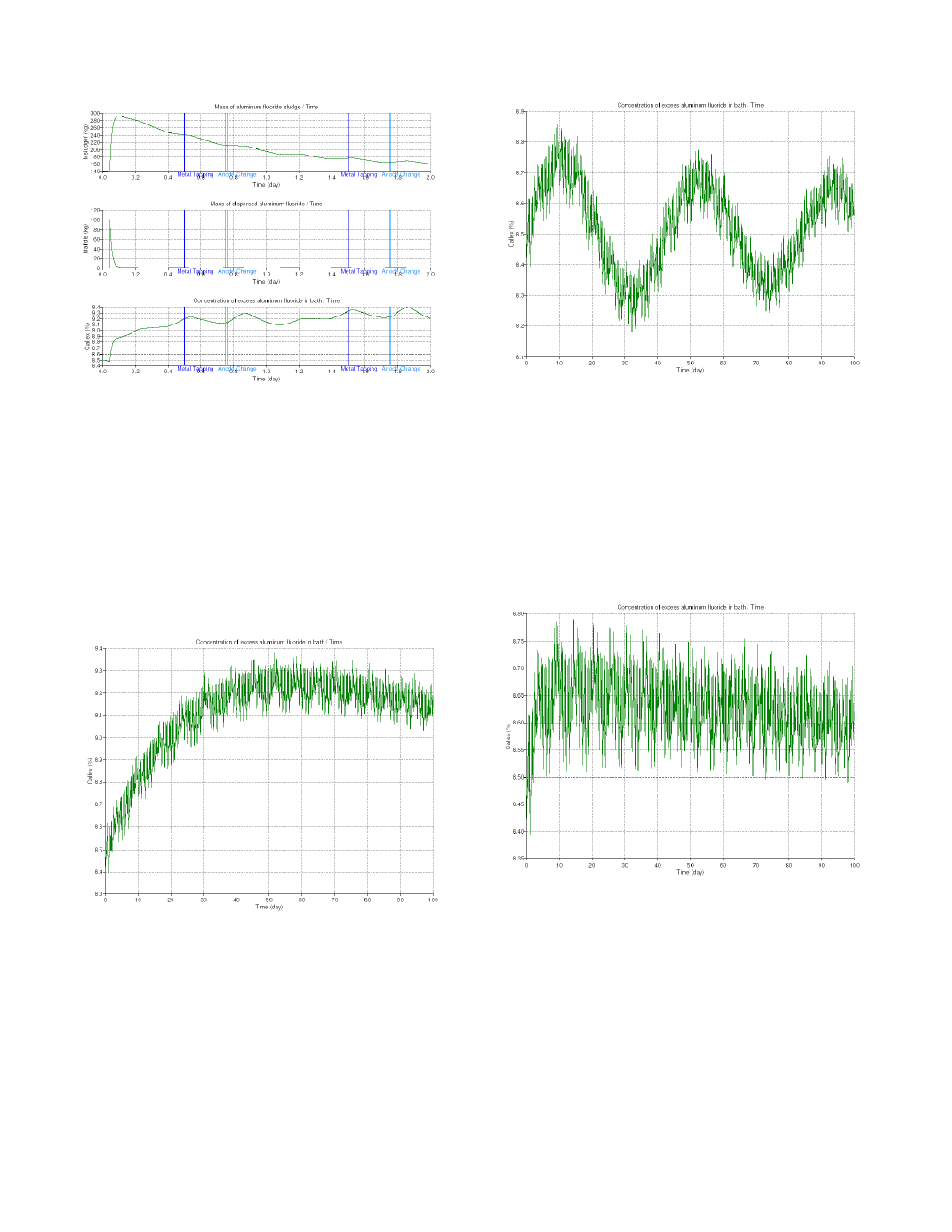
bath sample and the introduction of the results in the cell controller
database can also lead to significant oscillations in the excess AlF3
kg per hour direct AlF3
an equilibrium at 9.2% is reached.
analysis is an example of integral control feedback loop with a time
lag. As we can see in Figure 4, when a 10% adjustment is made on
the base direct AlF3
oscillation pattern emerges.
proportional to the current concentration offset. Figure 5 presents
the obtained results, there are no more oscillations but by using a
proportional 1 kg/hr% proportional adjustment constant on a base
1.2 kg/hr feeding rate, we are ending up with a 0.5% permanent
error as with a proportional only control mode, it takes an offset to
make a correction.
eliminated by reintroducing the integral part of the feedback
control (i.e. readjusting the base feeding rate at each feedback
loop). This PI feedback control works so well that that could very
well be the end of the story! Unfortunately, it relies on the fact that
we are taking 1 bath sample per cell per day and that the results are
available to the cell controller in 24 hours. Many smelters cannot
keep up with this kind of schedule, so they have to reduce the bath
sampling frequency introducing a longer time lag in the control
feedback loop.